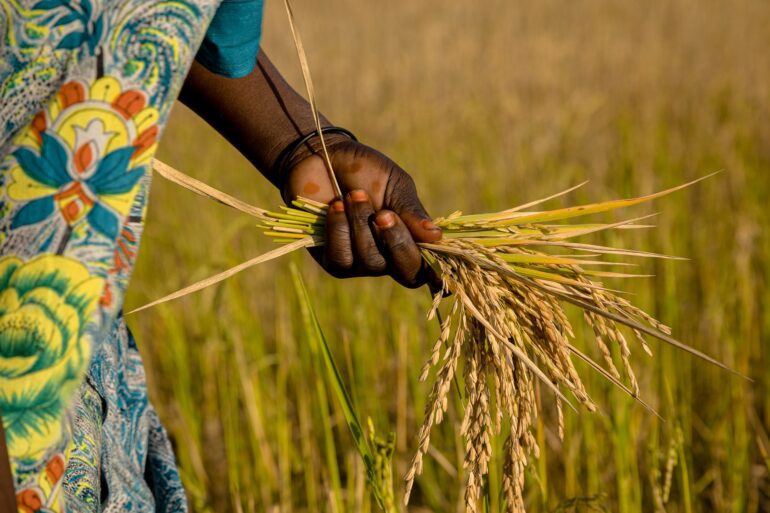TL;DR:
- AKADEMIYA2063’s Africa Agriculture Watch (AAgWa) tool utilizes AI to predict and track crop rotations and yields in Africa.
- The tool helps mitigate food crises by prioritizing staple food production and addressing system shocks and health emergencies.
- AAgWa incorporates various factors like vegetation index, surface temperature, rainfall, and water supply to make accurate predictions.
- It utilizes historical data to map crop growth and determine future cultivation patterns.
- AAgWa leverages digital technology to remotely monitor vegetation cover, weather data, and other parameters.
- The challenge lies in translating big data tools into actionable insights for farmers, necessitating collaboration with cooperatives and extension workers.
Main AI News:
In the pursuit of effective decision-making to combat food crises, African countries are turning to an innovative artificial intelligence (AI) tool. This cutting-edge technology, developed by AKADEMIYA2063, a prominent research organization, has the potential to revolutionize crop tracking and yield prediction across the continent. Known as the Africa Agriculture Watch (AAgWa) tool, it offers a crucial resource for mitigating the food crisis that looms large.
Racine Ly, the esteemed director of data management for this groundbreaking project, emphasized the limitations of relying solely on conventional analytic techniques. “To address the challenges we face,” Ly stated, “we must transcend traditional methods and embrace data-driven decision-making.” Highlighting the significance of accurate data and precise predictions, he underscored the pivotal role this tool plays for both researchers and decision-makers alike.
The AAgWa tool primarily aims to optimize the production of staple foods such as maize, cassava, and sorghum. By prioritizing and maximizing their cultivation, African nations can bolster their resilience against system shocks, including extreme weather events, plant diseases, pest outbreaks, and even health emergencies such as the disruptive COVID-19 pandemic.
This visionary platform, which launched in late April, empowers the public to interact with the program and access crucial data on crop yields and production by region. Leveraging a multitude of factors, the AAgWa tool generates predictions based on key variables such as the Normalized Difference Vegetation Index, daytime surface temperature, rainfall data, and the availability of underground water. Furthermore, it incorporates historical data to map the crops’ growth patterns and predict future cultivation, alongside an encompassing crop calendar.
Notably, AAgWa harnesses the power of digital technology to remotely monitor real-time changes in vegetation cover, weather patterns, and various parameters. The group behind this transformative endeavor stated, “Recent advances in machine learning and computer modeling enable us to track and forecast crop production using remotely sensed data, presenting benefits that extend beyond overcoming data collection obstacles during crises.”
Moreover, digital technologies offer a solution to the persistent challenges of accessing accurate agricultural statistics. By measuring arable land, planted areas, crop yields, and even the spatial distribution of harvested quantities, these digital tools provide a comprehensive toolkit for improved decision-making. However, the true challenge lies in translating these immense reservoirs of data into actionable insights that the average farmer can comprehend and utilize effectively.
To bridge this crucial gap, the project intends to collaborate closely with cooperatives, leveraging their ability to aggregate and disseminate information effectively. Simultaneously, they are exploring ways to engage extension workers to ensure vital information reaches the farmers who need it most. “Our initial focus,” Ly explained to Science X, “is on working with cooperatives as information hubs, but we are also dedicated to finding ways to empower extension workers to directly assist and educate farmers.”
Conclusion:
The implementation of the AI-powered AAgWa tool marks a significant advancement in Africa’s agricultural landscape. By accurately forecasting crop rotations and yields, this technology offers crucial support in mitigating the food crisis. Furthermore, its ability to address system shocks and health emergencies ensures enhanced resilience.
However, effective dissemination of information to farmers remains a challenge. Collaborating with cooperatives and extension workers will be pivotal in bridging this gap and empowering farmers with actionable insights. This innovation has the potential to revolutionize the agricultural market in Africa, fostering sustainable growth, improved decision-making, and increased food security.

